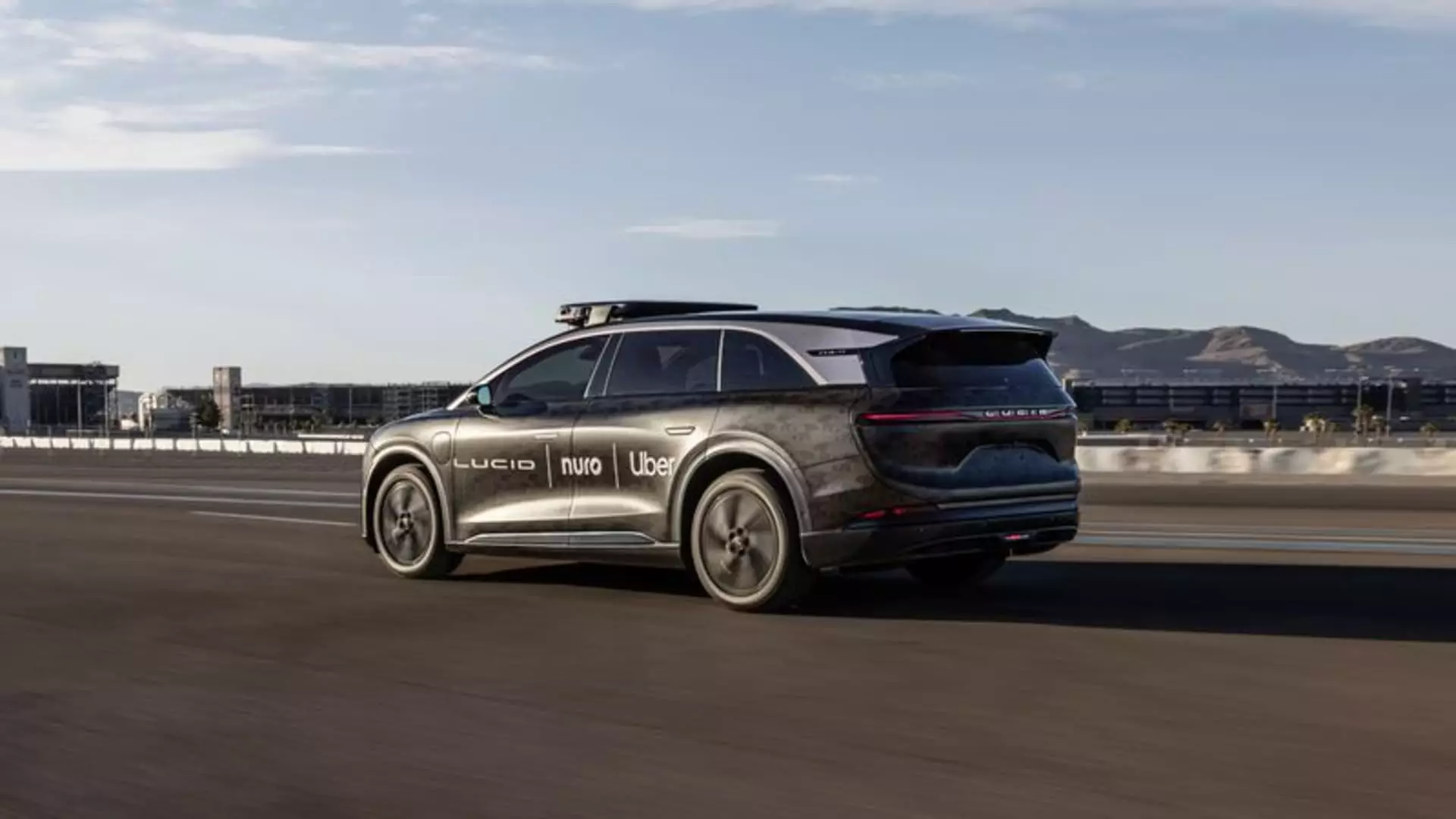The recent alliances between Uber, Lucid, and Nuro spotlight a transformative shift in mobility—one brimming with promise but tainted by potential pitfalls. As these tech giants unite to push forward a fleet of over 20,000 robotaxis within six years, it becomes evident that the future of transportation is increasingly dominated by corporate conglomerates eager to redefine both economic landscapes and societal structures. While the enthusiasm around autonomous vehicles suggests a new era of convenience, the underlying implications for workers, consumers, and the global power hierarchy deserve critical scrutiny.
Seizing control of the mobility sector offers these corporations unprecedented levers of influence, yet it also risks entrenching monopolies that could stifle competition, innovation, and consumer choice. Their ability to set infrastructural standards, control data, and shape urban environments means the future may favor well-capitalized industry elites at the expense of small players and ordinary workers. As Uber invests heavily in Lucid’s electric vehicles and partners with Nuro to develop cutting-edge self-driving technology, we must ask whether this is progress or a calculated consolidation of economic power disguised as innovation.
The Real winners: Tech Monopolies and Investment Triumphs
The recent uptick in Lucid’s stock—surging nearly 30%—underscores the immense financial motivations coursing through the autonomous vehicle industry. These investments are not just about deploying new transport modalities; they are strategic bets on the future control of mobility markets. Lucid’s claim of a 450-mile range and its commitment to efficient, fast charging aim to dominate the premium EV segment, but it’s clear that the broader ambition extends beyond mere vehicle sales. The partnership with Nuro provides Uber access to Level 4 autonomous driving tech, which can operate without human intervention—an innovation with vast implications for employment, safety, and urban planning.
From a central-right libertarian perspective, these developments appear as a natural progression of technological progress—greater efficiency and industrial leadership—rather than an existential threat. However, the true concern lies in how entrenched corporate giants will leverage their financial and technological might to secure dominant market positions, potentially marginalizing competitors, undermining workers’ livelihoods, and influencing public policy in their favor. Investment inflows into these ventures are less about technological feasibility; they are about economic dominance.
The Societal and Economic Ramifications of Automation
Automated ride-hailing promises numerous benefits—reduced accidents, lower transportation costs, increased accessibility—but these are overshadowed by risks of significant job losses in driving occupations. The push toward robotaxis effectively threatens millions of jobs worldwide, from taxi drivers to transport workers, in an industry historically associated with working-class communities. For a center-right liberal stance that favors innovation but emphasizes social stability, this creates a conundrum: how to balance technological progress with the societal fallout.
Moreover, the deployment of autonomous vehicles in urban centers will inevitably influence city planning, infrastructure, and public transport systems. If corporations control the majority of self-driving fleets, they could shape urban environments to serve their interests, prioritizing profit over public good. Such a shift might centralize urban mobility under a handful of tech conglomerates, leading to increased economic inequality and reduced civic agency.
Power Shift and Market Control: The New Digital Monopoly?
The strategic alliance between Uber, Lucid, and Nuro resembles the formation of a new digital monopoly—a fusion of data, capital, and technology that could eventually dictate not only how humans move but also how economies grow and societies evolve. These companies are setting standards, controlling information, and potentially influencing regulatory frameworks under the guise of innovation. Their ability to deploy thousands of autonomous vehicles will generate vast troves of data, further consolidating their dominance and creating barriers for emerging competitors.
From a pragmatic, center-right perspective, fostering a competitive environment is essential. While embracing innovation, it’s crucial to ensure that the economic advantages of autonomous technology do not morph into unchecked corporate power. The challenge is in creating policies that enable technological growth while safeguarding democratic oversight and preventing monopolistic practices. Otherwise, the future risks being a landscape where a handful of corporations dictate not only transportation but also the economic and social paradigms of the modern age.
The move toward widespread deployment of robotaxis signals a radical shift that will reshape wealth, power, and everyday life. As these corporations forge ahead, society must critically examine whether this is genuine progress or a new form of economic dominance that marginalizes the many for the benefit of the few. The stakes are high: the future of mobility could either serve the collective good or entrench a new oligarchy.

